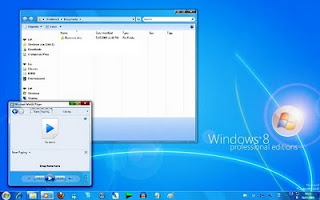So you've taken the plunge and opted to install Bodhi Linux. Perhaps you read a recent review or one of the screen shots in
our gallery caught your eye. Either way you've got a newly installed system and you might be wondering what exactly to do next. The following are seven things that are a good idea to do on a cleanly installed Bodhi system.
1.) Check for Updates
Bodhi Linux has a semi-rolling release model. By this we mean you can easily upgrade from one minor version to the next and we continue to push out package updates in between releases. To update your Bodhi install open LXTerminal from your applications menu and run:
sudo apt-get update && sudo apt-get dist-upgrade
Enter your password, press enter and then let APT work it's magic.
2.) Read the Quick Start
There are a lot of hard working people on the Bodhi team that try to bring you the best documentation possible. At the same time we know there is a lot of information to absorb when first using Bodhi. Because of this we have assembled everything you need to know to get started right off the bat in
one handy guide.
It is well worth taking a short while to look it over.
3.) Install Some Software
One of the things you will note about Bodhi Linux is that we have a minimal application set that gets installed by default. Fear not though - there are two powerful, graphical tools at your disposal for installing more software on Bodhi.
The first is our
Application Center. Navigating to this page in the default Midori browser allows you to easily find and install an application for almost every task you can think of with just a few clicks. If you are not certain what software you might need we have assembled to application "packages" that each contain a group of software for making your computer fully functional. Our "
Nikhila Application Set" is fully loaded for most any task you can think of and the "
Pratibha Application Set" provides a full range of lighter applications that should run quickly even on older computers.
Feel free to take some time to look at all the other software that is listed on the page as well. Maybe even install a
game or two.
Can't find what you are looking for on our software page? Don't worry - you can also find Synaptic package manager in your menu which will let you find and install anything in the Bodhi, GetDeb or Ubuntu repositories.
4.) Install Multi-Media Codecs
If you use VLC for your media needs or you only use open source codecs you can skip this step. However if you wish to use a music player such as
Clementine or a video player such as
mPlayer then you will need to install system wide codecs to support different types of media. You can install media codecs to support almost every media type that exists
here. If you also plan to use your Bodhi machine for DVD playback you will also need to install the DVD library from
here.
5.) Customize your Appearance
While Bodhi comes with a fairly good range of themes installed by default there are plenty more to be found! You can find over thirty different themes to choose from
here.
Find the one that best fits you taste/personality. If you are looking for even more customization you can find twenty different icon themes to easily install on your Bodhi system
here.
6.) Get to Know Your Profiles
Not to be confused with your "theme", your selection of profile in the Enlightenment desktop determines how your desktop is laid out. When you first installed Bodhi you where asked what type of layout you wanted to have - this was the profile selection. If you come to discover after installing that you don't like your first profile choice (or simply want to try the others), you can easily change it
without a reinstall. You can learn how to change profiles and many other things they can do
here.
7.) Join the Community
Have any general questions feel free to drop a comment below as well.
~Jeff Hoogland








































